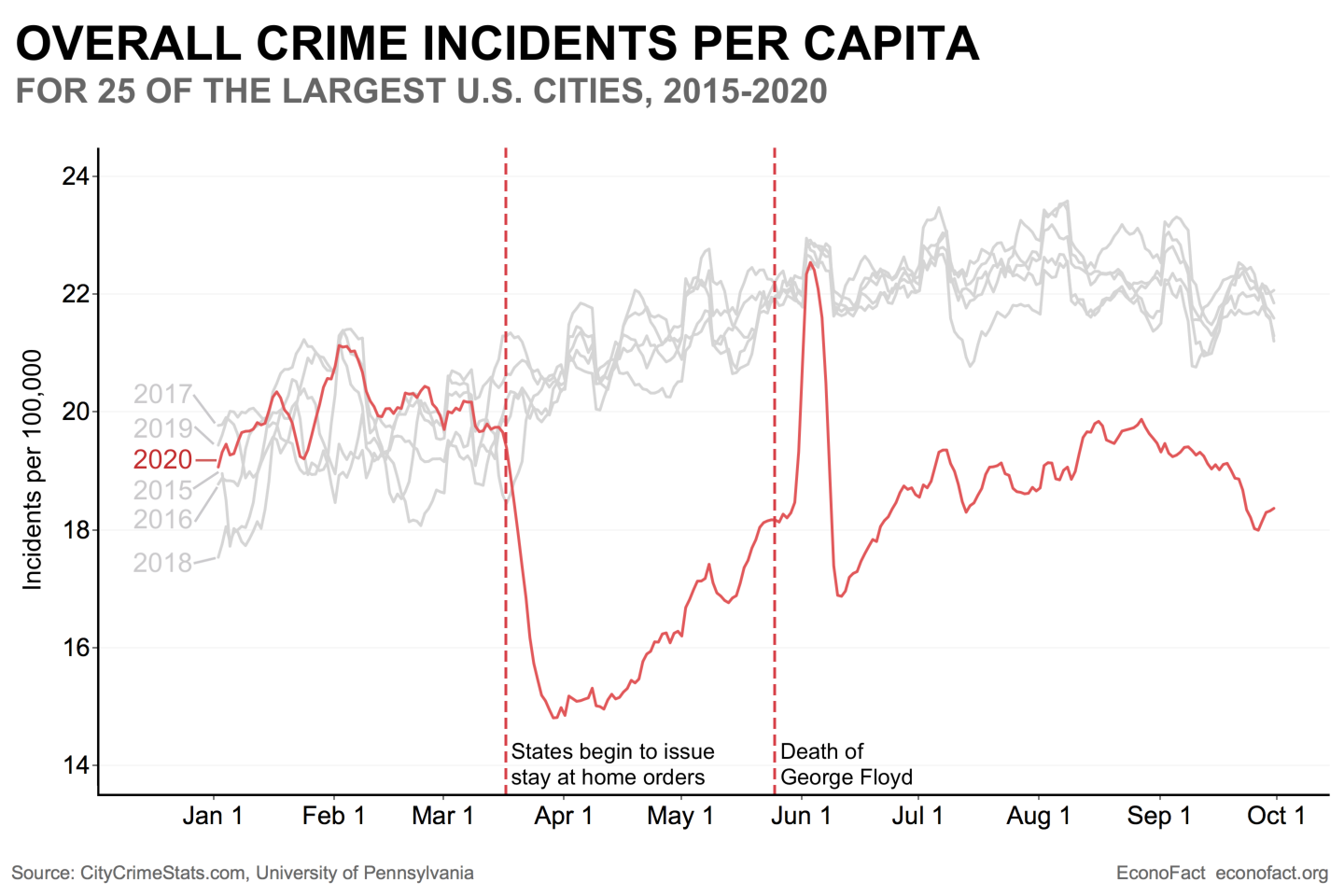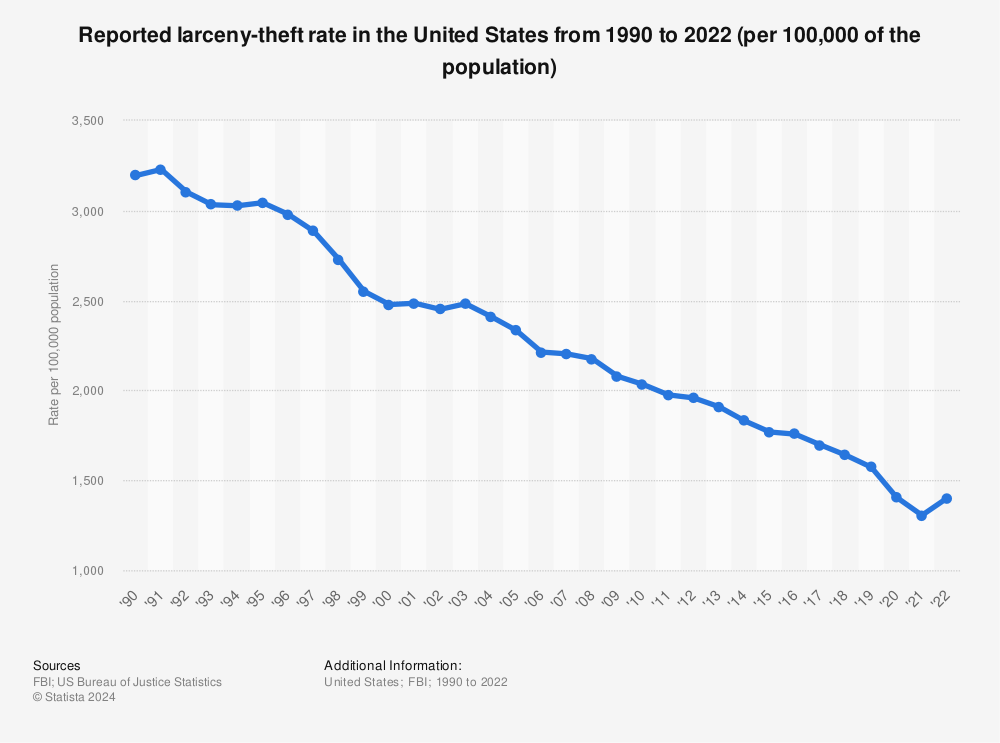From Richard Hanania Interracial Crime and ‘Perspective’:
The truth of the matter is we have a disgraceful amount of crime in the US, and the costs are not simply a matter of the number of people robbed, raped, and killed. It’s also a tragedy that what could be some of the most valuable urban real estate in the country is basically uninhabitable. In fact, part of the reason that black-on-white violence is rare in this country is because whites have overwhelmingly fled places where blacks live due to the threat of violence.
It’s also uncommon because there are just not that many blacks, only 13% of the US population–a figure that has remained remarkably constant for decades as other groups have grown. Black-on-white crime or white-on-white crime is of greater personal concern compared to black-on-black crime. Whites are probably more likely to be affected by the former than the latter.
If you wrap yourself in facts and data, this has to include data that goes against your hypothesis. As per Steven Pinker, crime has been falling for decades in the US after having peaked in 1990. This trend is observed in most metro areas, especially New York:

As for Covid and crime, it’s not clear either way. The graph above shows a small increase in murders in NYC from 2020-2021. Some data shows a reduction for certain types of crime, or crime spiking and then falling again, such as during the George Floyd riots, in which crime rose during the Summer of 2020:

The lockdowns may have depressed crime to abnormally low levels, so when the lockdowns ended, crime subsequently rebounded as would be expected when people’s movement is no longer restricted.
Another factor is confirmation bias: seeking out evidence that confirms your underlying belief. Social media gives a distorted or carefully curated view of reality, not what is actually true or the correct context. I think this can explain the disconnect between Pinker’s findings and sentiment online. Social media, for the first time ever, reverses how the news is consumed: instead of being delivered the news (e.g. newspaper, tv, radio, etc.), people can seek out stories and journalists and curate the news themselves.
Someone can cite examples of shoplifting footage that goes viral on social media as evidence of the collapse of law and order, but this ignores all the footage, which does not go viral, of people not shoplifting. Being a store detective means watching hours of footage of people not shoplifting, punctuated by the occasional shoplifter. Police know some criminals will get away, but eventually will reoffend enough times and be caught. How many criminals commit a crime and then stop after succeeding once? Hardly, they tend to keep reoffending until eventually caught.
And in agreement with Pinker, it’s not only violent crime on the decline, but so is property crime:


Chicago, St. Louis, Baltimore and others get tons of hype on social media, but these cities are tiny. St. Louis has a population of just 290,000–way smaller than I would have otherwise guessed given how much everyone talks about it. Chicago is just 2.7 million. Detroit has only 700k. Overall, adding up the most violent cities, it adds up to around ten million people, which is just 1/33 of the overall US population. Anyone can cherry pick the most violent cities as evidence of things getting worse, but the average gives a more accurate picture.
The focus on violent crime ignores white collar crime, which can be worse because it has many more victims per perpetrator compared to violent crime. A single call center scammer can defraud thousands of people or more, usually the elderly, who are not as savvy about scams, collectively for hundreds of thousands of dollars or more, yet as far as the criminal justice system is concerned it’s still classified as a ‘single count of fraud’. The collapse of FTX, for example, had thousands of claimants/victims for a combined billions of dollars, all perpetrated by one individual and his handful of accomplices.
True, America has a large amount of crime, but it’s also because America has a lot of people (including, as Mr. Hanania correctly notes, large populations of groups that are disproportionately more likely to commit violent crime). Also, compared to the rest of the world, the US is still relatively safe. Many countries in Europe rank higher in violent crime compared the US, including even some Nordic countries. I have always been skeptical of the ‘Nordic miracle’. The supposed success of lower incarceration rates and more lenient sentences probably overlooks factors such as demographics or unreported crime.
But in agreement with Mr. Hanania, more needs to be done. I believe crime mitigation, such as police and prisons, has among the highest ROI of any government spending. Instead of trillions spent on education in which the ROI is hard to quantify, divert more of that to prison spending where it’s needed most. The ROI from putting away criminals, who impose a cost on everyone, is likely greater than spending trillions to raise reading scores by maybe a quarter of a percent.
Overall, America is a low-trust country in which people do not really like each other that much, but rather seek to isolate from each other whenever the situation allows or the opportunity arises, whether it’s gentrification, gated communities, private schools, or ‘white flight’. It’s not just whites distancing from blacks, but rich whites distancing from poor whites, and the same for blacks. For this reason, America will never be like Japan or Singapore. But at the same time, perspective is needed on this issue.
Lots and lots of evil people out there, vindictive interest groups, and politicians who only care about manipulating votes. A vast mindless machine.
Violent crimes should decrease all over the world as the population ages. 40yo men are less prone to violent action vs 20yo men.